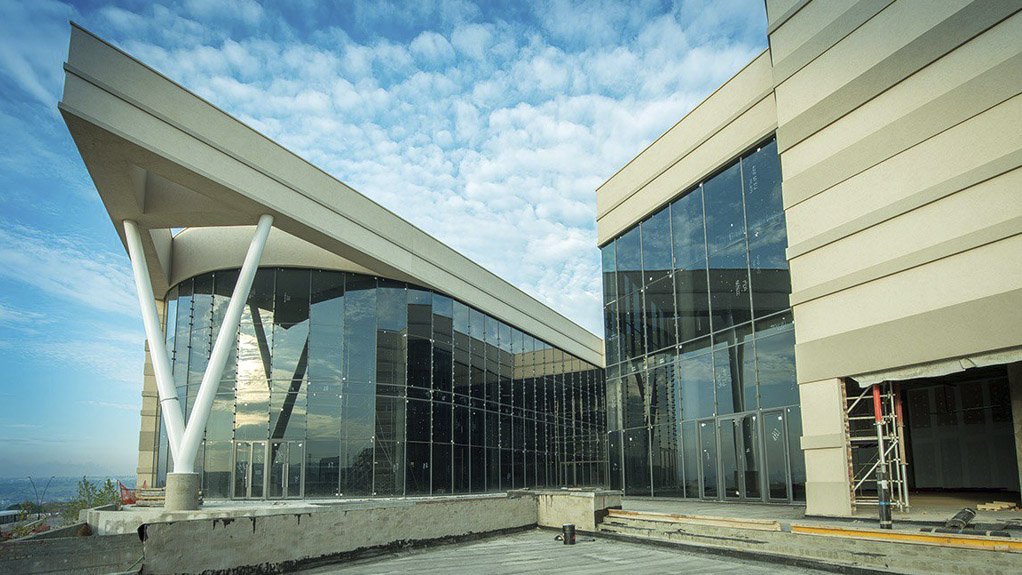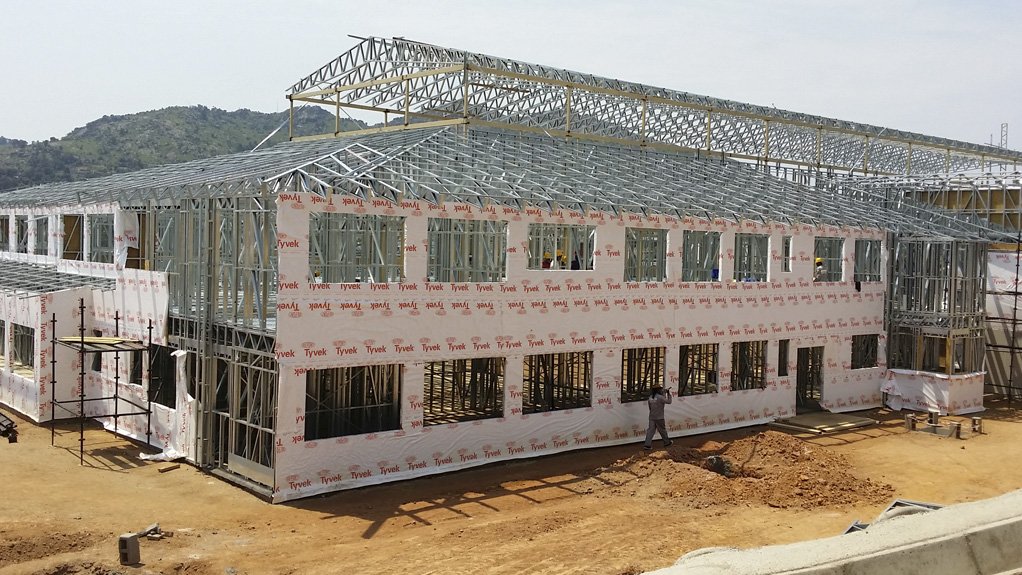Local LSFB market worth R1-billion yearly



MALL OF AFRICA PROJECT The latest large-scale project completed using LSF was the external walling of the 131 000 m2 floor area of the multibillion-rand Mall of Africa
LSFB BUILDING METHOD LSFB is a green building method that reduces waste and saves logistics costs
The South African light steel frame building (LSFB) market is estimated to be worth about R1-billion a year. This is based on the steel used by LSF manufacturers, as well as volumes of the major materials – including gypsum board, fibre cement board, insulation, vapour permeable membranes and fasteners – used in the LSFB market.
“LSFB is a green building method, based on the reduction in waste, savings in logistics, thermal insulation to create energy efficient buildings and the absolute minimum water waste on site,” says Southern African Light Steel Frame Building Association (Sasfa) director John Barnard.
He adds that the advantages of LSFB range from speedy construction and the corresponding logistical cost advantages of using lightweight material to accuracy, ease of installation of products and durability. “The steel frame will last several lifetimes if installed correctly.”
Barnard further explains that the latest large-scale project completed using LSF was the external walling of the 131 000 m2 floor area of the multibillion-rand Mall of Africa, in Midrand, Gauteng, developed by corporate services and asset management company Atterbury Property Group.
“LSFB was initially used only for residential structures, but its use has expanded to three-storey apartment blocks, commercial buildings (such as the Mall of Africa, McDonalds, Burger King, KFC and others), office buildings, schools, hospitals and the curtain walling of multistorey office buildings,” he notes.
Sasfa Training Courses
With the growing use of LSF across industries, Safsa has also noted a growing interest in its continuing professional development-accredited training courses since the beginning of this year.
“What we aim to do through these courses is to transfer knowledge, and to maintain and improve the quality standards of LSF construction throughout the value chain,” notes Barnard.
He explains that one of the courses deals with SANS 517 LSFB and is aimed at all architects, engineers, quantity surveyors, developers and other LSF practitioners, who should have a working knowledge of the building code. This one-day course consists of an introduction to LSFB, as well as an overview of the development of this building method and industry in Southern Africa.
The second one-day course, cold-formed steel and LSF design to SANS 10162:2, is aimed specifically at design engineers who have to check LSF structures for structural adequacy.
“Sasfa has been fortunate to obtain support from the University of Stellenbosch in presenting the theoretical and academic part of this course,” Barnard says.
The cold-formed steel and LSF design course begins with the fundamentals of plate buckling theory, and contextualises this with thin-walled structural elements as encountered in LSFB. Member, local and distortional buckling are generally considered.
The second part of this course is more practical in nature, covering the design intent when dealing with LSF structures, and highlights the design criteria provided in SANS 517. The design of floor systems is covered using an Excel-based design tool for joints.
Sasfa ensures the highest levels of professionalism during the courses, including the use of some of the most experienced LSFB experts in the country as presenters. This year, presenters for the SANS 517 course were consulting engineer and Sasfa member Mike Hull and Barnard; and for the cold-formed steel design to SANS 10162:2 course, Hull, Barnard and the University of Stellenbosch’s Etienne van der Klashorst presented.
Sasfa presented these courses at venues in Johannesburg, Durban and Cape Town. The association is investigating remote learning, whereby courses will be recorded and made available using an Internet-based system.
“As is required by the professional institutes, attendees are requested to evaluate and rate the courses, from suitability of the venue and presentations by the lecturers to course material and handouts. The aspects of the 2016 courses have consistently been rated between ‘very good’ and ‘excellent’. We look forward to presenting these courses again in 2017,” Barnard concludes.
Comments
Announcements
What's On
Subscribe to improve your user experience...
Option 1 (equivalent of R125 a month):
Receive a weekly copy of Creamer Media's Engineering News & Mining Weekly magazine
(print copy for those in South Africa and e-magazine for those outside of South Africa)
Receive daily email newsletters
Access to full search results
Access archive of magazine back copies
Access to Projects in Progress
Access to ONE Research Report of your choice in PDF format
Option 2 (equivalent of R375 a month):
All benefits from Option 1
PLUS
Access to Creamer Media's Research Channel Africa for ALL Research Reports, in PDF format, on various industrial and mining sectors
including Electricity; Water; Energy Transition; Hydrogen; Roads, Rail and Ports; Coal; Gold; Platinum; Battery Metals; etc.
Already a subscriber?
Forgotten your password?
Receive weekly copy of Creamer Media's Engineering News & Mining Weekly magazine (print copy for those in South Africa and e-magazine for those outside of South Africa)
➕
Recieve daily email newsletters
➕
Access to full search results
➕
Access archive of magazine back copies
➕
Access to Projects in Progress
➕
Access to ONE Research Report of your choice in PDF format
RESEARCH CHANNEL AFRICA
R4500 (equivalent of R375 a month)
SUBSCRIBEAll benefits from Option 1
➕
Access to Creamer Media's Research Channel Africa for ALL Research Reports on various industrial and mining sectors, in PDF format, including on:
Electricity
➕
Water
➕
Energy Transition
➕
Hydrogen
➕
Roads, Rail and Ports
➕
Coal
➕
Gold
➕
Platinum
➕
Battery Metals
➕
etc.
Receive all benefits from Option 1 or Option 2 delivered to numerous people at your company
➕
Multiple User names and Passwords for simultaneous log-ins
➕
Intranet integration access to all in your organisation




















